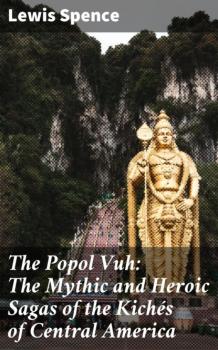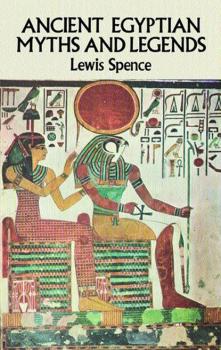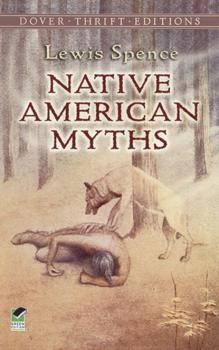Lewis Spence
Список книг автора Lewis SpenceANCIENT MYTHOLOGY Boxed Set (Illustrated Edition)
The Ancient Near East is considered the cradle of civilization. Mesopotamia is a historical region of Western Asia situated within the Tigris–Euphrates river system. Babylonia was an Amorite state in lower Mesopotamia where an empire was created out of the territories of the former kingdoms of Sumer and Akkad. Assyria was a region on the Upper Tigris whose kings controlled a large kingdom at three different times in history, covering most of the Middle East. Ancient Egypt was a civilization of ancient North Africa, concentrated along the lower reaches of the Nile River. Around the 8th century BC the torch of civilization was taken from the Near East to ancient Greece and Rome. Both Greek and Roman societies flourished and wielded great influence throughout much of Europe, Northern Africa, and Western Asia. The rise of civilization corresponded with the institutional sponsorship of belief in gods, supernatural forces and the afterlife. Many civilizations adopted their own form of Polytheism and each of these nations developed their own mythologies which influenced the culture, arts, and literature of both Eastern and Western civilization. Myths and Legends of Babylonia & Assyria Myths and Legends of Ancient Egypt Mythology Myths and Legends of Ancient Greece and Rome
The Popol Vuh: The Mythic and Heroic Sagas of the Kichés of Central America
"The Popol Vuh: The Mythic and Heroic Sagas of the Kichés of Central America" by Lewis Spence. Published by Good Press. Good Press publishes a wide range of titles that encompasses every genre. From well-known classics & literary fiction and non-fiction to forgotten−or yet undiscovered gems−of world literature, we issue the books that need to be read. Each Good Press edition has been meticulously edited and formatted to boost readability for all e-readers and devices. Our goal is to produce eBooks that are user-friendly and accessible to everyone in a high-quality digital format.
Ancient Egyptian Myths and Legends
A prolific complier of mythology, Lewis Spence would author over thirty books on the legends and folklore of numerous parts of the world. As the title would suggest, in this edition we have a collection of ancient Egyptian myths and legends. Spence examines the history and culture of Egypt with particular attention to its influence on their belief systems. Various Egyptian gods including Osiris, Isis, Anubis, Ra, as well as many others are discussed in length along with the myths associated with them. Popular fables such as «The Story of the Shipwrecked Sailor» and the «Story of Two Brothers,» are included in a selection of legends. Lastly the work talks of the practice of magic in ancient Egypt and of foreign and animal gods. This collection of ancient Egyptian myths and legends spans the gamut of such literature and should make for an interesting read for anyone interested in the subject.
Ancient Egyptian Myths and Legends
"Let us walk in the gloom of the pyramids, in the cool shadows of ruined temples, aye, through the tortuous labyrinth of the Egyptian mind itself, trusting that by virtue of the light we carry we shall succeed in unravelling to some extent the age-long enigma of this mystic land." — from Chapter One.In this classic study, a noted mythologist made perhaps the first serious attempt to review the religious history of ancient Egypt in the light of the science of modern mythology. Instead of regarding Egyptian mythology and legend as unique, «classic» and inviolate, as did many Egyptologists, Spence saw Egyptian religious thought as part of world mythology, rooted in primitive conceptions common to mankind as a whole and related to those of many other cultures. In supporting this thesis, Spence offers an immensely erudite in-depth survey of the broad spectrum of Egyptian gods and goddesses, cults, and beliefs, as well as a concise review of Egyptian history, manners, customs, and archaeology.Animism, totemism, fetishism, creation myths, and other aspects of early religious beliefs are explored in an introductory chapter. The author then goes on to discuss the Egyptian priesthood, mysteries and temples, the cult of Osiris; Ra the Sun-God, Anubis, Horus, Thoth, and numerous other deities; the Book of the Dead, the birth of Hatshepsut, sacred trees, alchemy, the festival of Bast, Egyptian art, magic, and amulets, legends; and a host of other topics.Enhanced with over 50 photographs and illustrations, this book belongs in the library of any student of ancient Egypt or of early man's attempts, through mythology and legend, to give order, meaning, and purpose to his world.
Native American Myths
Drawn from the myths and legends of the Algonquins, Iroquois, Sioux, Pawnee, and Northern and Northwestern Indians, these enchanting tales offer insights into tribal character and beliefs. Selected by the distinguished British anthropologist and folklorist Lewis Spence, they range in theme from romantic love to rivalry between warriors to victory over powerful forces. The details of their recounting evoke images of Native Americans' innermost aspirations and fears as well as their larger worldview.A major forerunner of modern studies of myth, this compelling book blends the legends with factual material, giving each myth a meaningful perspective. Students of anthropology and ethnology will prize the especially rich variety of mythical imagery in this collection, which features a simple, direct manner of storytelling that will appeal to children as well as to adults. All readers will find in these pages a treasury of suspenseful tales that reveal much of the spirit of North America's original cultures.




